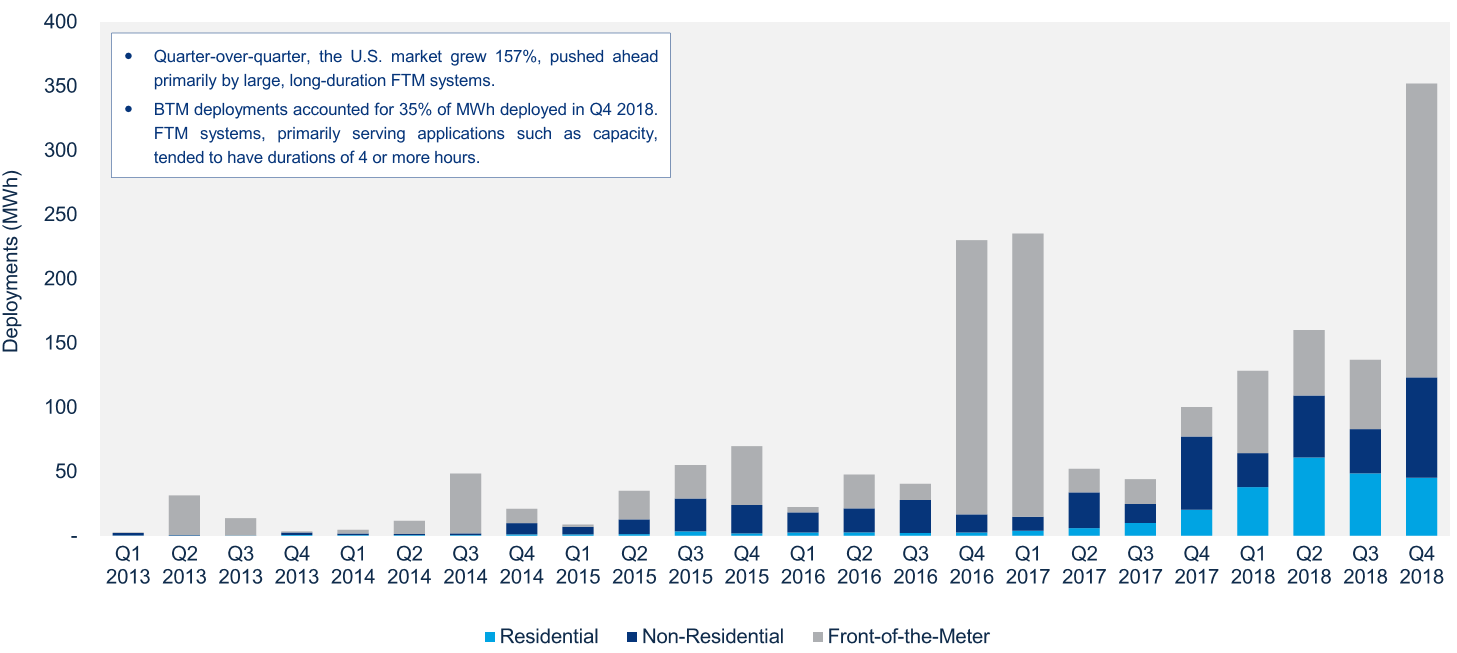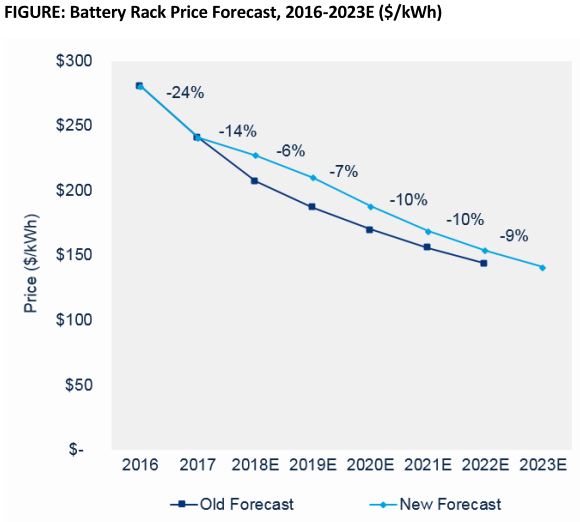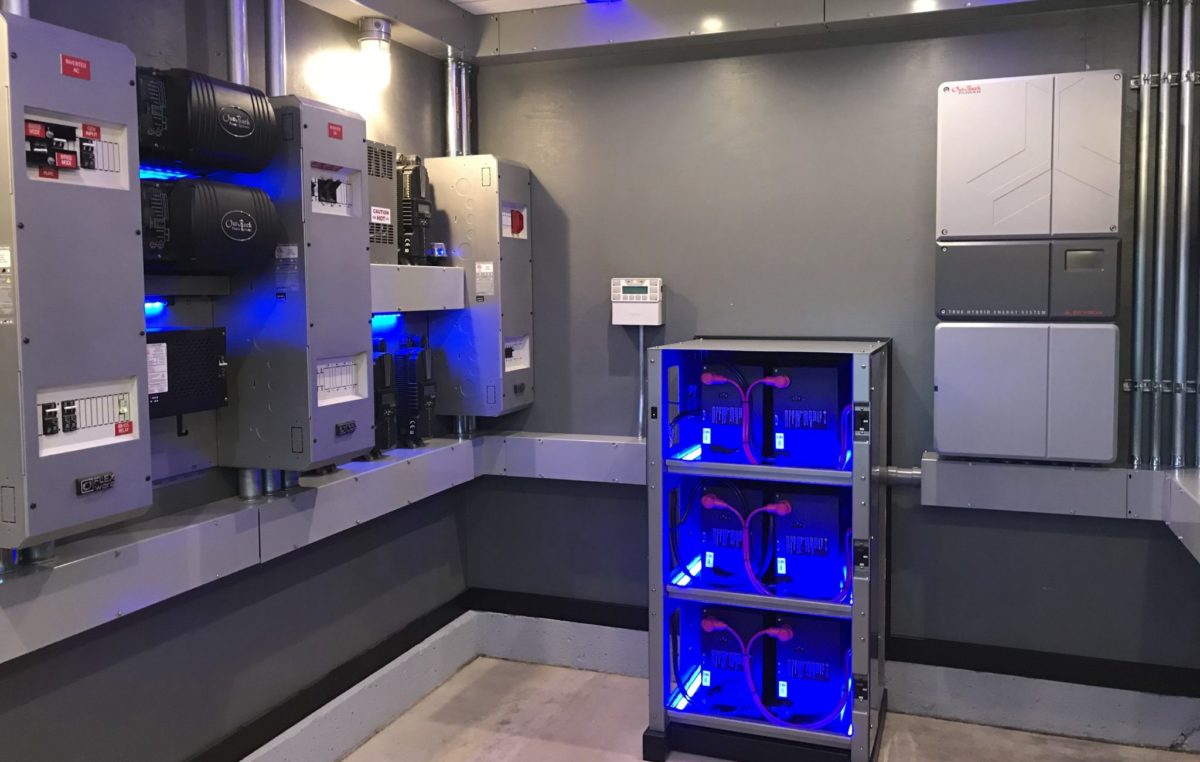Throughout 2018, pv magazine USA got to share big energy storage headlines – in Q1 residential storage grew 9X, Q2 saw residential grew 10X and the overall industry 200%. And while Q3 numbers were flat year on year – we did get a glimpse of a future pipeline that is 40 times greater over the next four to five years than the volume deployed in all of 2018, we were told that 74% of residential customers had an interest in energy storage, and some predicted that 9 in 10 battery systems would come with solar power.
With that, 2018 as a whole gets a big headline as chemical-based energy storage power capacity deployed grew 44% over 2017, with energy storage energy capacity growing by 80% over 2017. The report, co-developed by Wood Mackenzie Power & Renewables and the Energy Storage Association, also noted that 2018’s growth was tempered by lithium ion shortage, and that pricing didn’t fall as fast as was anticipated.

53% of the 310.5 MW / 777 MWh volume deployed was behind the meter, however the fourth quarter boom was powered by front-of-the-meter storage, with 157% growth year-over-year for MWh. California led the market, with Hawaii, Texas, and New York all deploying respectable volumes.
Wood Mackenzie has also observed that with the extensive growth of residential solar power, the market had become a power unto itself. Brett Simon, senior storage analyst and Wood Mackenzie Renewables & Power, noted:
We’re seeing the rise of opportunities for time-of-use shifting, solar self- consumption, and even some early examples of employing residential storage for grid services, such as by Green Mountain Power in Vermont and Liberty Utilities in New Hampshire.
This sentiment was pushed harder when Sunrun won a deal to use home solar+storage systems in the ISO New England power grid.

The report also found that battery shortages were slowing the total volume that could potentially be deployed. This slowdown came from multiple angles, with Elon Musk stating that for much of the second half of 2018 energy storage manufacturing lines were tweaked to feed the Model 3 ramp. Even with this pull back, Tesla’s energy storage deployments grew about 300% in 2018, and similar growth is projected in 2019.
 The report also noted that South Korean energy storage demand, due to a strong government push, also contributed to the USA shortage, so much so that the 20%+ price declines that were projected, slid to possible single-digit declines. The report suggests that by the end of the first half this year battery shortages should begin to ease.
The report also noted that South Korean energy storage demand, due to a strong government push, also contributed to the USA shortage, so much so that the 20%+ price declines that were projected, slid to possible single-digit declines. The report suggests that by the end of the first half this year battery shortages should begin to ease.
Wood Mackenzie also projects 600% growth in the next two years, with 2019 doubling 2018, and then 2020 tripling 2019. The report then forecasts another near-doubling by 2023, meaning that over the next five years Wood Mackenzie expects a total of 1200% growth in deployed power capacity.
The front of the meter systems that dominated the fourth quarter can be found in the EIA-680M form. Below, we’ve extracted battery projects from the form that were installed in 2018 and got EIA rating attention (link to Google Sheet).
This content is protected by copyright and may not be reused. If you want to cooperate with us and would like to reuse some of our content, please contact: editors@pv-magazine.com.








By submitting this form you agree to pv magazine using your data for the purposes of publishing your comment.
Your personal data will only be disclosed or otherwise transmitted to third parties for the purposes of spam filtering or if this is necessary for technical maintenance of the website. Any other transfer to third parties will not take place unless this is justified on the basis of applicable data protection regulations or if pv magazine is legally obliged to do so.
You may revoke this consent at any time with effect for the future, in which case your personal data will be deleted immediately. Otherwise, your data will be deleted if pv magazine has processed your request or the purpose of data storage is fulfilled.
Further information on data privacy can be found in our Data Protection Policy.